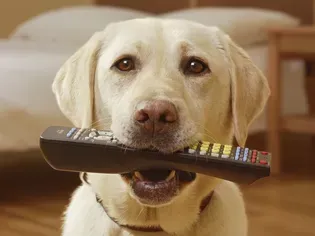What to Do if Your Dog Ate a Battery
Updated on 04/26/24

What to Do if Your Dog Ate a Battery: A Comprehensive Guide
Introduction
Batteries are common household items, but they can pose a serious threat to our furry friends. Ingesting a battery can cause a range of health issues, from gastrointestinal distress to life-threatening burns and organ damage. If you suspect your dog has eaten a battery, it's crucial to take immediate action. This comprehensive guide will provide you with the essential steps to follow in this emergency situation.
Signs and Symptoms of Battery Ingestion
The signs and symptoms of battery ingestion can vary depending on the type of battery, the amount consumed, and your dog's individual response. Some common signs include:
* Vomiting
* Diarrhea
* Abdominal pain
* Drooling excessively
* Pawing at the mouth
* Shaking or trembling
* Difficulty breathing
* Seizures
Immediate Actions to Take
If you witness your dog eating a battery or suspect they may have done so, follow these urgent steps:
* Call your veterinarian or the nearest animal hospital immediately. Do not wait until your dog shows symptoms.
* Identify the type of battery consumed. This information will help your veterinarian determine the appropriate course of treatment.
* Note the time of ingestion. This will help the veterinarian monitor your dog's progress and adjust their treatment plan accordingly.
* Do not induce vomiting. This can cause further damage to your dog's esophagus and digestive tract.
Veterinary Treatment and Prognosis
The treatment for battery ingestion will depend on several factors, including the type of battery, the amount consumed, and your dog's condition. Common treatment options include:
* Emetics: These medications can be administered to induce vomiting and remove the battery from your dog's stomach.
* Surgery: In some cases, surgery may be necessary to remove the battery from your dog's digestive tract.
* IV fluids: Intravenous fluids can help flush out toxins and prevent dehydration.
* Antibiotics: Antibiotics may be prescribed to prevent or treat infections.
The prognosis for battery ingestion depends on the severity of the injury and the promptness of treatment. If the battery was swallowed whole and has not caused any damage, the prognosis is generally good. However, if the battery was chewed up or caused significant burns or tissue damage, the prognosis may be guarded.
Types of Batteries and Their Risks
Different types of batteries pose varying levels of risk to dogs. Here are some common types and their potential hazards:
* Button batteries: These small, coin-shaped batteries are often found in watches, calculators, and hearing aids. They can cause severe burns if they become lodged in your dog's esophagus.
* Alkaline batteries: These are the most common type of battery used in household devices. They can cause gastrointestinal distress and dehydration.
* Lithium-ion batteries: These batteries are found in laptops, cell phones, and power tools. They can cause electrical burns and other serious injuries.
* Lead-acid batteries: These large batteries are used in cars and industrial equipment. They can cause severe burns, organ damage, and even death.
Preventive Measures
To prevent your dog from eating batteries, follow these precautions:
* Store batteries securely out of reach.
* Dispose of old or used batteries properly.
* Keep battery-operated devices out of your dog's reach.
* Teach your dog to "leave it" when they encounter unfamiliar objects.
Conclusion
Battery ingestion is a serious emergency that requires immediate veterinary attention. By knowing the signs and symptoms, taking prompt action, and following your veterinarian's instructions, you can help your dog recover from this potentially life-threatening situation. Remember, prevention is key, so take the necessary steps to keep your furry friend safe.
Explore More Pets

Basic Training
Puppy and Baby Introductions

Working Dog Breeds
All About Search and Rescue Dogs

Dog Treatments
Puppy Vaginitis: Signs, Causes and Treatment

Dog Adoption
After More Than 1,200 Days in the Shelter, Coco Goes Home

Basic Training
How to Train Your Puppy to Go on Potty Pads

Hybrid Dog Breeds
The Difference Between a Mutt, Mixed Breed, or Designer Dog?

Dog Treatments
Nail Problems in Dogs

Puppies
7 Reasons Why Two Dogs Are Better Than One